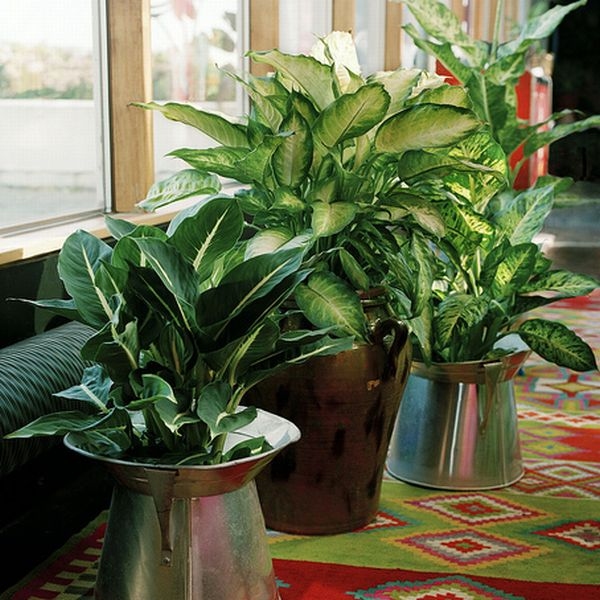 THE CASTING
THE CASTING
Proper water supply is the most important care measure in the soil culture of indoor plants. Too much can be just as harmful as too little!
As could already be seen from the consideration of water as a growth factor for plants, the water requirements of the plant species originating from completely different climatic environments are very different. The water consumption also depends on the seasonal exposure of one and the same species- and temperature conditions at their location in the room, as well as the stage of development of the individual plant. The potting soil used also plays a certain role, because the different types of soil have a very different water holding capacity. The form of the water supply must then be determined accordingly.
As a rule, the jug is used to pour water into the rim of the pot for indoor plants. This should be avoided, that water into the "heart" of the plants, d.h. between the leaf bases on the root neck. If there is little or no air movement in the room, rotting easily occurs. An exception are the pineapple plants with a funnel-shaped arrangement of the leaves. These bromeliad species gather in their natural habitat, to which z. B. Aechmea, Billbergia, Nidularium and Vriesea belong, in these quivers of leaves water, to then take on the epidermal cells of their leaves. To air dry them, to keep warm rooms alive, its funnel-shaped core must be constantly filled with water!
Dipping is cheaper than watering for older plants with strong root balls and a high water requirement for the species. You put the pots in a vessel with water for so long, until the earth is saturated with moisture. This shows that the soil has sufficient water absorption, that no more air bubbles rise. This is also the only way, to moisten severely dried-out balls of ericaceous plants such as azaleas or camellias. When watering such dry-balled plants from above, the water would run off between the edge of the pot and the ball, which had shrunk due to drought, without harming the plants. The pots must be completely immersed in water for at least an hour, so that the earth with its peaty components is sufficiently enriched with water again. In all heather plants (.Ericäceae), including the azaleas, and all in Heide- or peat soil cultivated plants such as hydrangeas and camellias, it is important to prevent the soil from drying out. But you can also use most plants – especially the richly flowering ones - dive regularly in the evenings after hot summer days. The plants are then supplied with enough water at night, to transport a supply to the evaporating organs.